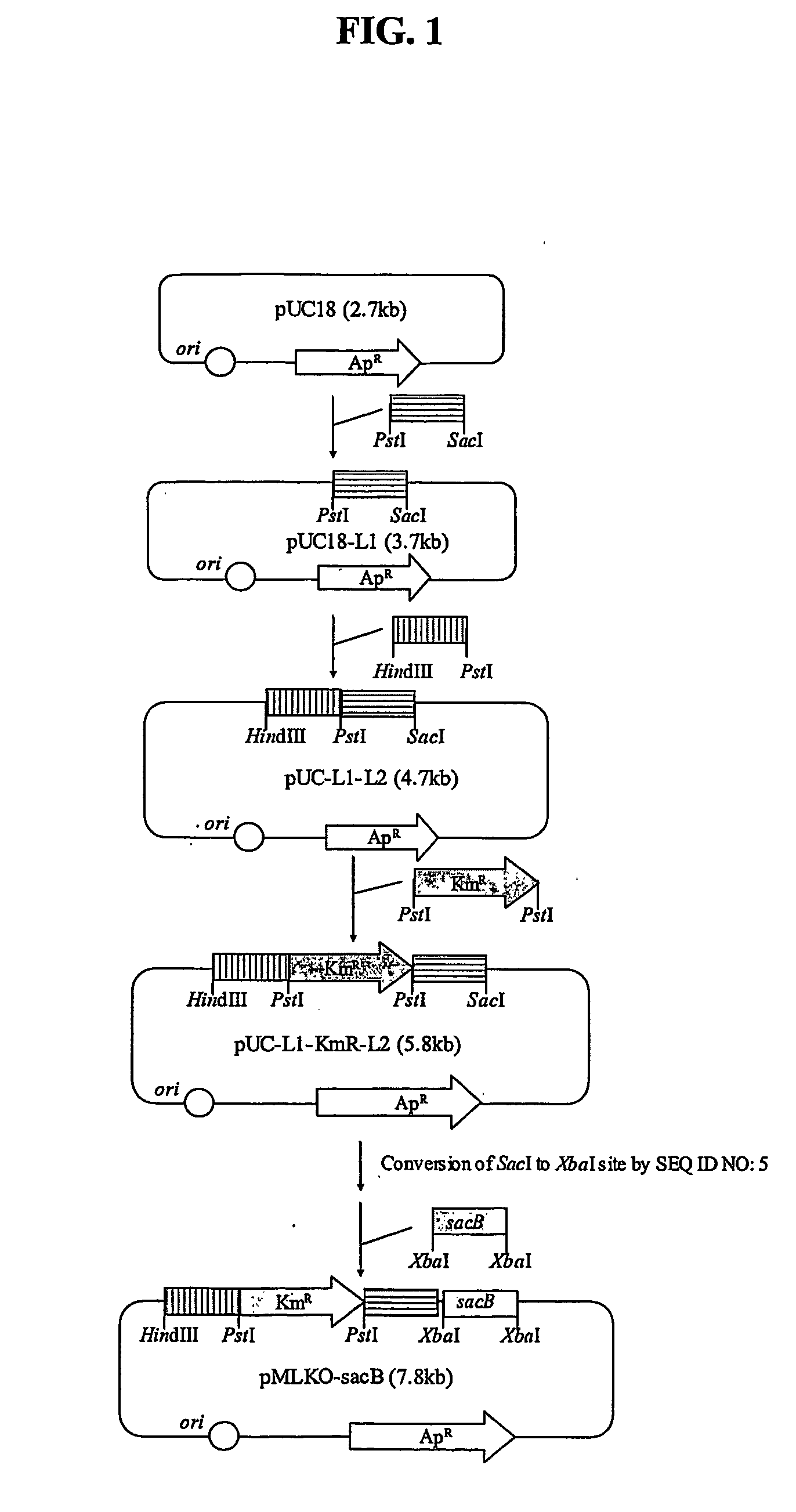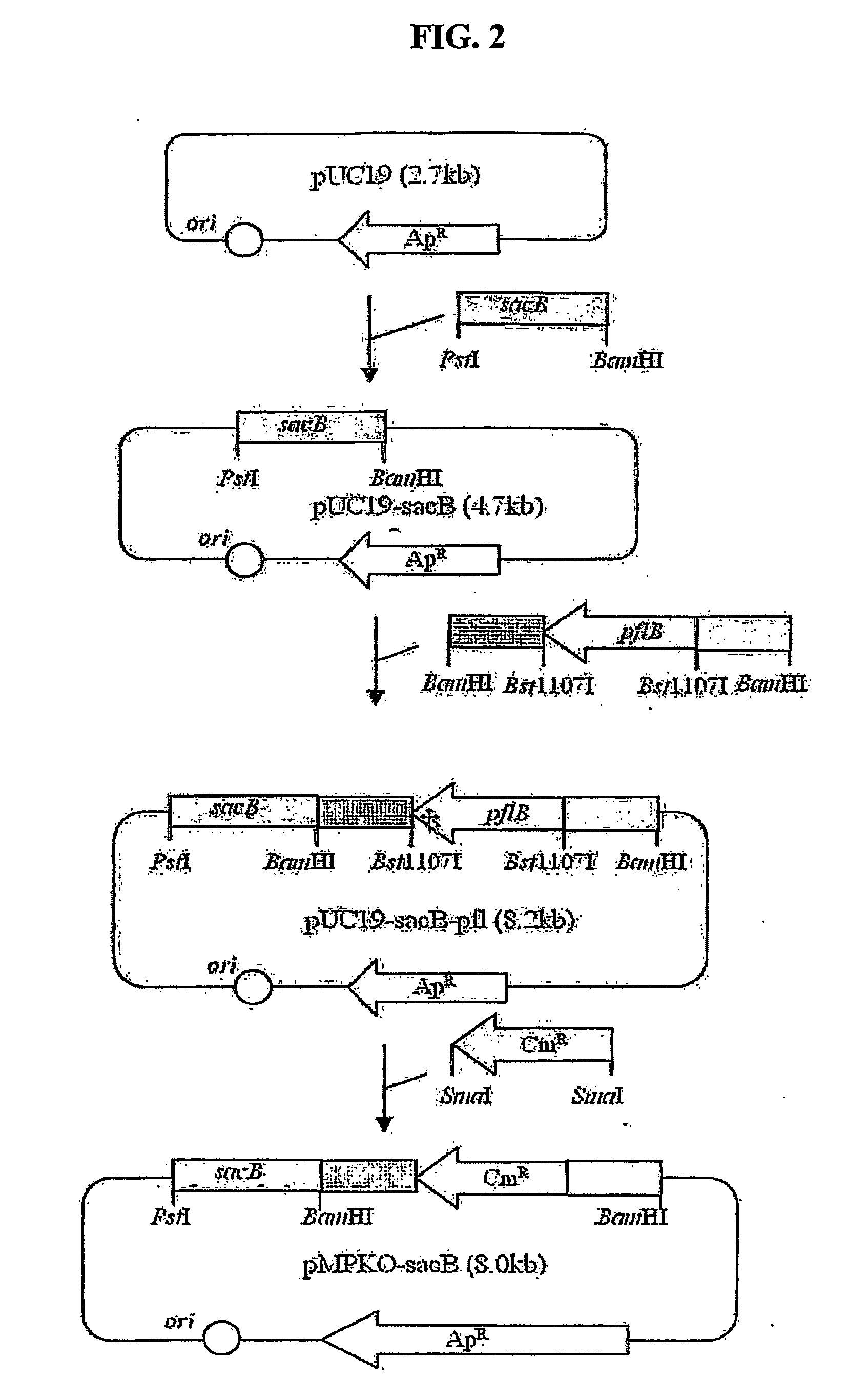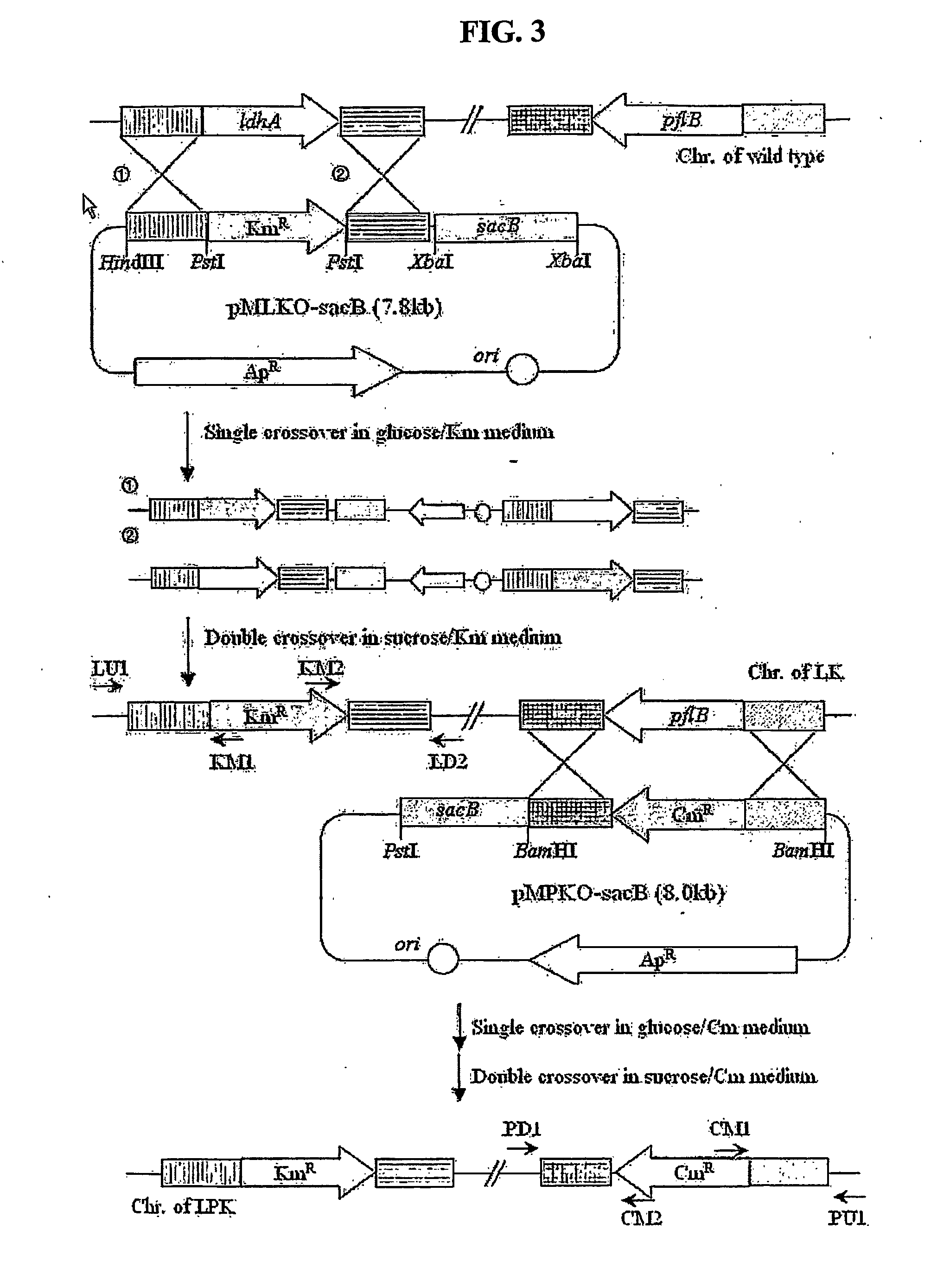Novel rumen bacteria variants and process for preparing succinic acid employing the same
- Summary
- Abstract
- Description
- Claims
- Application Information
AI Technical Summary
Benefits of technology
Problems solved by technology
Method used
Image
Examples
example 1
Construction of pMLKO-sacB
[0041] In order to disrupt a lactate dehydrogenase gene (ldhA) by homologous recombination, a gene exchange vector was constructed in the following manner. First, the genomic DNA of Mannheimia succiniciproducens 55E (KCTC 0769BP), as a template, was subjected to PCR using primers set forth in SEQ ID NO: 1 and SEQ ID NO: 2 below, and then, the obtained PCR fragment was cut with SacI and PstI and introduced into pUC18 (New England Biolabs, Inc., Beverly, Mass.), thereby constructing pUC 18-L1.
SEQ ID NO: 1:5′-CAGTGAAGGAGCTCCGTAACGCATCCGCCG (LS1)SEQ ID NO: 2:5′-CTTTATCGAATCTGCAGGCGGTTTCCAAAA (LP1)
[0042] Thereafter, the genomic DNA of Mannheimia succiniciproducens 55E, as a template, was subjected to PCR using primers set forth in SEQ ID NO: 3 and SEQ ID NO: 4 below, and the resulting PCR fragment was cut with PstI and HindIII and introduced into the pUC18-L1, thereby constructing pUC18-L1-L2.
SEQ ID NO: 3:5′-GTACTGTAAACTGCAGCTTTCATAGTTAGC (LP2)SEQ ID NO: 4:...
example 2
Construction of pMPKO-sacB
[0045] In order to disrupt a pyruvate formate-lyase gene (pfl) by homologous recombination, a genetic exchange vector was constructed in the following manner. A pKmobsacB template containing a sacB gene (Genbank 02730) was subjected to PCR using primers set forth in SEQ ID NO: 8 and SEQ ID NO: 9 below. The resulting sacB product was cut with PstI and BamHI and inserted into pUC19 (Stratagene Cloning Systems. La Jolla, Calif.), thereby constructing pUC19-sacB.
SEQ ID NO: 8:5′-AGCGGATCCCCTTCTATCGCCTTCTTGACG (SBG)SEQ ID NO: 9:5′-GTCCTGCAGGGGTACAAAATCACGGGCGTC (SPR)
[0046] The genomic DNA of Mannheimia succiniciproducens 55E, as a template, was subjected to PCR using primers set forth in SEQ ID NO: 10 and SEQ ID NO: 11 below. The resulting PCR fragment was cut with BamHI and fused with the pUC19-sacB cut with BamHI, thereby constructing pUC19-sacB-pfl.
SEQ ID NO: 10:5′-CATGGCGGATCCAGGTACGCTGATTTCGAT (PB1)SEQ ID NO: 11:5′-CAAGGATCCAACGGATAAAGCTTTTATTAT (PB2)
[0...
example 3
Construction of Mannheimia sp. LPK Strain
[0048]FIG. 3 shows a process of constructing a mutant strain (LPK) by disrupting ldhA and pfl genes from Mannheimia succiniciproducens 55E. Mannheimia succiniciproducens 55E was plated on LB-glucose medium containing 10 g / l of glucose, and cultured at 37° C. for 36 hours. The colony formed was inoculated in 10 ml of LB-glucose liquid medium, and cultured for 12 hours. The culture broth which had been sufficiently grown was inoculated by 1% in 100 ml of LB-glucose liquid medium, and cultured in a shaking incubator at 200 rpm and 37° C.
[0049] When the culture broth reached an OD of about 0.2-0.3 after 4˜5hours, it was centrifuged at 4° C. and 4000 rpm for 10 minutes to collect cells. Then, the cells were resuspended in 200 ml of 10% glycerol solution at 4° C. The suspension was centrifuged at 4° C. and 4000 rpm for 10 minutes, and the cells were collected and resuspended in 200 ml of 10% glycerol solution at 4° C., and then centrifuged at 4° ...
PUM
| Property | Measurement | Unit |
|---|---|---|
| Concentration | aaaaa | aaaaa |
Abstract
Description
Claims
Application Information
 Login to View More
Login to View More - R&D
- Intellectual Property
- Life Sciences
- Materials
- Tech Scout
- Unparalleled Data Quality
- Higher Quality Content
- 60% Fewer Hallucinations
Browse by: Latest US Patents, China's latest patents, Technical Efficacy Thesaurus, Application Domain, Technology Topic, Popular Technical Reports.
© 2025 PatSnap. All rights reserved.Legal|Privacy policy|Modern Slavery Act Transparency Statement|Sitemap|About US| Contact US: help@patsnap.com



